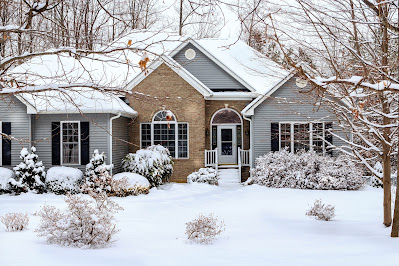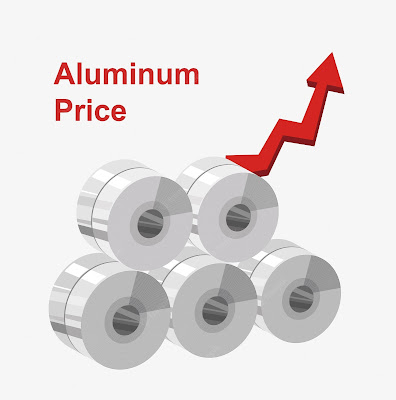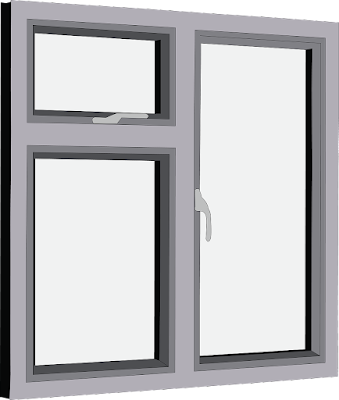Are you in the market for a new roof but feeling overwhelmed by the wide array of options available? Look no further! In this ultimate showdown, we will explore the battle between aluminum roofs and traditional roofing materials, helping you make an informed decision for your home. With the rising popularity of aluminum roofs, many homeowners are wondering if it's time to make the switch.
While traditional materials like asphalt shingles and wood may have been the go-to choices for decades, aluminum roofs offer a range of benefits that are hard to ignore. From increased durability and energy efficiency to enhanced curb appeal, aluminum roofs are becoming the top choice for homeowners seeking longevity and sustainability. However, traditional materials still have their merits. Join us as we delve into the pros and cons of each option, equipping you with all the information you need to make the right choice for your home.
Understanding Aluminum Roofs: Advantages and Disadvantages
Advantages of Aluminum Roofs
Aluminum roofs have gained popularity in recent years due to their numerous advantages. One of the biggest benefits of aluminum roofs is their exceptional durability. Unlike traditional roofing materials that may deteriorate over time, aluminum roofs are known for their resistance to corrosion, cracking, and warping. This makes them an excellent choice for homeowners living in areas prone to harsh weather conditions such as hurricanes or heavy snowfall.
In addition to durability, aluminum roofs also offer excellent energy efficiency. Their reflective properties help to reduce heat absorption, keeping your home cooler in the summer and potentially lowering your energy bills. This can be particularly beneficial in regions with hot climates, as it reduces the strain on your air conditioning system. Furthermore, aluminum roofs are often made from recycled materials, making them an eco-friendly choice for environmentally-conscious homeowners.
Another advantage of aluminum roofs is their lightweight nature. Aluminum roofs weigh significantly less than traditional materials like asphalt shingles or clay tiles. This makes the installation process easier and faster, potentially saving you both time and money. Additionally, the lightweight nature of aluminum roofs puts less stress on the structure of your home, reducing the risk of structural damage over time.
Disadvantages of Aluminum Roofs
While aluminum roofs offer numerous advantages, they have their drawbacks. One of the main concerns with aluminum roofs is the potential for denting. Although aluminum is a highly durable material, it can be prone to denting if struck with sufficient force. While this may not be a major issue for most homeowners, those living in areas with frequent hailstorms or falling debris should consider this factor before opting for an aluminum roof.
Another disadvantage of aluminum roofs is their higher upfront cost compared to traditional materials. Aluminum is a premium material, and its higher price point can deter some homeowners from choosing it as their roofing option. However, it is important to consider the long-term cost savings that aluminum roofs offer due to their durability and energy efficiency. While the initial investment may be higher, you will likely recoup these costs over time through lower maintenance and energy bills.
Finally, customization options may be limited with aluminum roofs. While traditional materials like asphalt shingles or wood offer a wide range of colours, styles, and textures, aluminum roofs tend to have a more limited selection. However, many manufacturers now offer a variety of finishes and coatings to mimic the aesthetic appeal of traditional materials, giving homeowners more options to choose from.
Exploring Traditional Roofing Materials: Pros and Cons
Pros of Traditional Roofing Materials
Traditional roofing materials, such as asphalt shingles and wood, have been the go-to choice for homeowners for many years, and for good reason. One of the biggest advantages of traditional materials is their affordability. Compared to aluminum roofs, traditional materials tend to have a lower upfront cost, making them a more budget-friendly option for homeowners on a tight budget.
Another benefit of traditional materials is their wide range of customization options. Asphalt shingles, for example, come in various colors, styles, and textures, allowing homeowners to choose a look that complements their home's architecture and personal preferences. On the other hand, wood roofs offer a natural and rustic charm that appeals to many homeowners.
Additionally, traditional materials are generally easier to repair. In the event of damage or wear, individual shingles or sections of wood can be easily replaced without the need for a full roof replacement. This can save homeowners both time and money in the long run.
Cons of Traditional Roofing Materials
While traditional roofing materials have their advantages, they also come with certain drawbacks. One of the main disadvantages is their lack of durability compared to aluminum roofs. Asphalt shingles, for example, have a limited lifespan and may need to be replaced every 20-30 years, depending on the quality and maintenance. Wood roofs, although charming, require regular maintenance and may be susceptible to rot, mildew, and insect damage.
Another concern with traditional materials is their lower energy efficiency. Asphalt shingles, in particular, can absorb heat, leading to higher energy consumption for cooling purposes. This impacts your energy bills and contributes to environmental pollution by increasing your carbon footprint.
Lastly, aluminum roof may be more resistant to extreme weather conditions than traditional materials. High winds, heavy rain, and hail can cause more damage to asphalt shingles or wood roofs, requiring frequent repairs or replacements. This can be a significant inconvenience and expense for homeowners living in areas prone to severe weather events.
Durability and Longevity: A Comparison Between Aluminum and Traditional Roofs
When it comes to durability and longevity, aluminum roofs are the clear winner. As mentioned earlier, aluminum roofs are highly resistant to corrosion, cracking, and warping, making them incredibly durable even in harsh weather conditions. They are also less likely to suffer from issues like rot or insect damage, which can be common with wood roofs.
In terms of lifespan, aluminum roofs can last up to 50 years or more with proper maintenance. This is significantly longer than traditional materials like asphalt shingles or wood, which typically have a lifespan of 20-30 years. Choosing an aluminum roof lets you enjoy peace of mind knowing that your investment will stand the test of time.
On the other hand, traditional roofing materials may require more frequent repairs and replacements due to their lower durability. Asphalt shingles, for example, may need to be replaced every few decades, adding to the long-term costs. Although wood roofs can last for several decades with proper care, they require regular maintenance to prevent issues like rot or insect infestations.
Energy Efficiency: How Aluminum Roofs and Traditional Materials Differ
Energy efficiency is an important factor to consider when choosing a roofing material, as it directly impacts your energy bills and environmental footprint. Aluminum roofs excel in energy efficiency due to their reflective properties. They reflect a significant portion of the sun's heat, reducing heat absorption and keeping your home cooler. This can result in lower energy consumption for cooling purposes, especially in regions with hot climates.
On the other hand, traditional roofing materials like asphalt shingles or wood roofs can absorb and retain heat, making your home warmer and potentially increasing your energy bills. This is particularly noticeable during the summer when air conditioning is high. The increased energy consumption also contributes to your carbon footprint, negatively impacting the environment.
It's worth noting that some traditional materials, such as clay tiles or metal roofs, can offer better energy efficiency compared to asphalt shingles or wood. However, aluminum roofs still outperform them in terms of reflectivity and overall energy savings.
Maintenance and Repairs: The Ease of Maintaining Aluminum Roofs vs Traditional Materials
When it comes to maintenance and repairs, aluminum roofs require minimal upkeep compared to traditional materials. Their resistance to corrosion, cracking, and warping means that they are less prone to damage and deterioration. This translates to fewer repairs and lower maintenance costs over time.
Aluminum roofs are also easy to clean and maintain. Unlike wood roofs, they do not require regular treatments or coatings, which may need to be stained or sealed periodically. Additionally, aluminum roofs are less likely to accumulate debris or develop moss or mildew, making them easier to keep clean and looking their best.
Traditional roofing materials, on the other hand, may require more frequent maintenance and repairs. Asphalt shingles, for example, can become loose, cracked, or damaged over time, requiring individual shingles to be replaced. Wood roofs may need regular inspections and treatments to prevent issues like rot or insect infestations. These maintenance tasks can be time-consuming and costly, especially if you need to hire professionals for repairs.
Cost Considerations: Comparing the Upfront and Long-Term Costs of Aluminum Roofs and Traditional Materials
When it comes to cost considerations, it's essential to look beyond the upfront price tag and consider the long-term costs associated with each roofing material. While aluminum roofs may have a higher upfront cost compared to traditional materials, they offer significant long-term cost savings.
One of the main factors contributing to the higher upfront cost of aluminum roofs is the premium nature of the material itself. Aluminum is more expensive than asphalt shingles or wood, which are widely available and relatively affordable. However, it's crucial to consider the durability and longevity of aluminum roofs. With a lifespan of 50 years or more, you won't need to replace your roof as frequently as you would with traditional materials, saving you money in the long run.
Additionally, the energy efficiency of aluminum roofs can lead to substantial savings on your energy bills. Reducing heat absorption and keeping your home cooler can lower your cooling costs during the summer months. Over time, these energy savings can offset the higher upfront cost of an aluminum roof.
On the other hand, traditional roofing materials may have a lower upfront cost, making them a more affordable option for homeowners on a tight budget. However, it's important to consider the lifespan and maintenance costs associated with traditional materials. Asphalt shingles, for example, may need to be replaced every 20-30 years, adding to the long-term expenses. Wood roofs require regular maintenance and treatments to prevent issues like rot or insect damage, which can also increase the overall cost of ownership.
Environmental Impact: Analyzing the Sustainability of Aluminum Roofs and Traditional Materials
In today's environmentally-conscious world, the sustainability of roofing materials is a major consideration for many homeowners. Aluminum roofs have a notable advantage in this regard. Aluminum is a highly recyclable, and many aluminum roofs are made from recycled content. This reduces the demand for new raw materials and helps to conserve natural resources.
Furthermore, aluminum roofs are energy-efficient, as mentioned earlier. By reflecting a significant portion of the sun's heat, they reduce the need for excessive air conditioning usage, leading to lower energy consumption and carbon emissions. This contributes to a greener and more sustainable living environment.
Traditional roofing materials like asphalt shingles or wood have a larger environmental footprint. Asphalt shingles, for example, are petroleum-based and require significant energy and resources to produce. Additionally, the disposal of old shingles contributes to landfill waste. Although wood roofs are a natural material, they may involve harvesting old-growth forests, which can have adverse environmental impacts.
It's worth noting that some traditional materials, such as clay tiles or metal roofs, can also be sustainable choices. Clay tiles are made from natural clay and can be recycled at the end of their lifespan. Depending on the type of metal used, metal roofs can be highly recyclable. However, it's important to consider the overall sustainability of the manufacturing process, energy efficiency, and lifespan when evaluating the environmental impact of traditional materials.
Aesthetics and Customization Options: Which Roofing Material Offers More Design Flexibility?
Aesthetics play a significant role in the overall appeal of a home, and the choice of roofing material can greatly impact the visual appeal of your property. Traditional roofing materials, such as asphalt shingles or wood, offer a wide range of customization options, allowing homeowners to choose a look that complements their home's architectural style and personal preferences.
Asphalt shingles, for example, come in various colors, styles, and textures. Whether you prefer a classic, slate-like appearance or a more contemporary design, there is an abundance of options to choose from. Wood roofs offer a natural and rustic charm, enhancing the overall character of your home.
While aluminum roofs may have been limited in terms of aesthetics in the past, advancements in technology and manufacturing have expanded the customization options. Many manufacturers now offer aluminum roofs with finishes and coatings that mimic the appearance of traditional materials. This means that homeowners can enjoy the benefits of aluminum roofs while still achieving the desired aesthetic appeal.
It's important to note that personal preferences and the architectural style of your home will ultimately determine which roofing material is most suitable for you. Take time to consider the overall look and feel you want to achieve, and explore the range of options available for each material.
Choosing the Right Roofing Material for Your Specific Needs and Circumstances
Choosing the right roofing material for your home involves considering various factors and weighing the pros and cons of each option. To make an informed decision, assessing your specific needs and circumstances is essential.
If durability, longevity, and energy efficiency are your top priorities, aluminum roofs are an excellent choice. They offer exceptional resistance to harsh weather conditions, a lifespan of 50 years or more, and significant energy savings. Aluminum roofs are also ideal for homeowners who prioritize sustainability and want a recyclable and energy-efficient roofing material.
On the other hand, if upfront cost and a wide range of customization options are more important to you, traditional roofing materials like asphalt shingles or wood may be a better fit. They are generally more affordable, offer a variety of styles and colors, and can be easily customized to match your home's architecture and personal preferences.
Ultimately, the right choice will depend on your budget, desired aesthetic, durability requirements, and environmental considerations. It's recommended to consult with a professional roofing contractor who can assess your specific needs and provide expert advice tailored to your circumstances.
Who are we?
We are passionate about the versatility of aluminum, and we want to help you bring your ideas to life. We offer a variety of aluminum materials to customers in the United States and Canada, and we're always happy to share our expertise and suggestions.
If you're looking for high-quality aluminum coil, anodized aluminum sheets, coloured aluminum wire, or aluminum foil, you've come to the right place. We pride ourselves on speedy delivery, so you won't have to wait long to get started on your project. You can reach us at 866-860-0652 or visit our website to learn more about our offerings.
Don't miss this opportunity to access the best materials on the market. Let us help you make your vision a reality!






